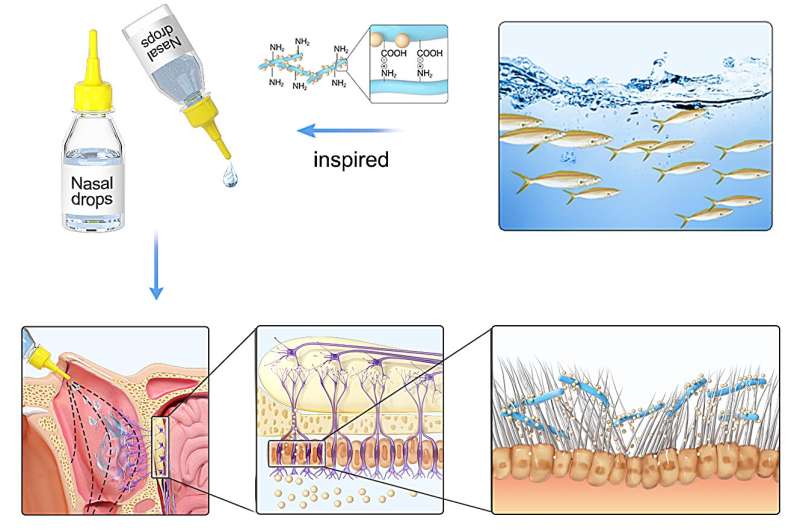
Adequate drug delivery across the blood-brain barrier is a critical factor in treating central nervous system (CNS) disorders. Inspired by swimming fish and the microstructure of the nasal cavity, Prof. Cui is the first to develop swimming short fibrous nasal drops that can directly target the nasal mucosa and swim in the nasal cavity, which can effectively deliver drugs to the brain. The paper is published in the journal Science Bulletin.
Swimming short fibrous nasal drops with charged controlled drug release were fabricated by electrospinning, homogenization, the ?-? conjugation between indole group of fibers, the benzene ring of leucine-rich repeat kinase 2 (LRRK2) inhibitor along with charge-dipole interaction between positively charged poly-lysine (PLL) and negatively charged surface of fibers, which enabled these fibers to stick to the nasal mucosa, prolonged the residence time on the mucosa, and prevented rapid mucociliary clearance.
In vitro, swimming short fibrous nasal drops were biocompatible and inhibited microglia activation by releasing LRRK2 inhibitor. In vivo, luciferase-labeled swimming short fibrous nasal drops delivered LRRK2 inhibitor to the brain through the nasal mucosa, alleviating cognitive dysfunction caused by sepsis-associated encephalopathy by inhibiting microglial inflammation and improving synaptic plasticity.
“These newly developed swimming short fibrous nasal drops are a promising strategy for the treatment of CNS diseases,” Prof. Wenguo Cui says.
Prof. Cui (Department of Orthopaedics, Shanghai Key Laboratory for Prevention and Treatment of Bone and Joint Diseases, Shanghai Institute of Traumatology and Orthopaedics, Ruijin Hospital, Shanghai Jiao Tong University School of Medicine) and Dr. Buwei Yu led this study.
More information:
Juan Wang et al, Swimming short fibrous nasal drops achieving intraventricular administration, Science Bulletin (2024). DOI: 10.1016/j.scib.2024.03.013
Citation:
Swimming short fibrous nasal drops achieve intraventricular administration (2024, April 23)
short-fibrous-nasal-intraventricular-administration.html
.
. The content is provided for information purposes only.
